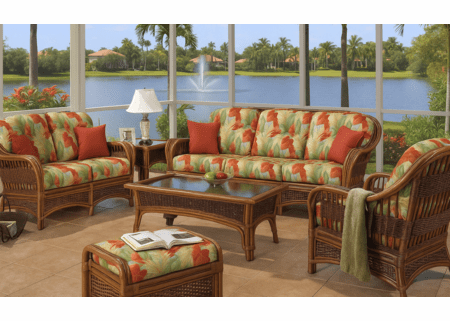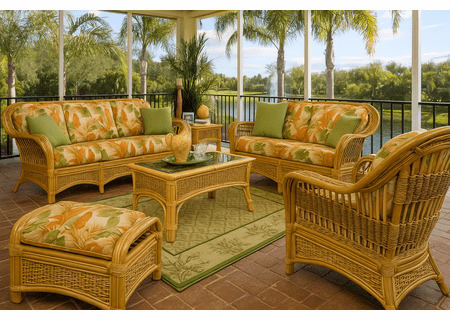
Rattan is a versatile material that has been used for centuries to create a wide variety of products. From furniture to handicrafts, rattan has become a popular choice among designers and homeowners alike. In this article, we will explore what rattan is, its history, and its many uses.
Introduction
Rattan is a natural material that has been used for centuries to create a wide variety of products. Its unique properties and aesthetic appeal make it a popular choice for designers and homeowners looking for a versatile and sustainable material. In this article, we will explore what rattan is, its history, and its many uses.
What is Rattan?
Rattan is a type of climbing palm that grows in tropical regions. It has a strong, flexible stem that can be easily woven into intricate designs. Rattan is similar to bamboo but is more flexible and durable, making it a popular choice for furniture and handicrafts. The outer layer of the rattan stem is removed to reveal the core, which is then used to create a wide range of products.History of Rattan
Rattan has been used for centuries in Asia and Africa to create a wide range of products. It was first introduced to the Western world in the 19th century when British colonizers discovered it in Southeast Asia. Rattan quickly became a popular material for furniture and handicrafts, and its popularity continues to this day.Types of Rattan
There are two main types of rattan: natural and synthetic. Natural rattan is made from the stem of the rattan palm, while synthetic rattan is made from plastic or resin. Natural rattan is more environmentally friendly but is also more susceptible to damage from sunlight and moisture. Synthetic rattan, on the other hand, is more durable and weather-resistant but is not as sustainable as natural rattan.Advantages of Rattan
One of the main advantages of rattan is its versatility. It can be easily woven into intricate designs, making it a popular choice for furniture and handicrafts. Rattan is also a sustainable material, as it is harvested from renewable sources and does not require the use of harmful chemicals or pesticides. In addition, rattan is lightweight and easy to move, making it ideal for outdoor furniture.Disadvantages of Rattan
One of the main disadvantages of rattan is its susceptibility to damage from sunlight and moisture. Natural rattan can fade and become brittle over time if exposed to sunlight, while synthetic rattan can crack and warp if exposed to moisture. In addition, rattan can be difficult to clean and may require special care to maintain its appearance.Uses of Rattan
Rattan is a versatile material that can be used to create a wide range of products. Some of the most popular uses of rattan include furniture, home decor, garden and outdoor furniture, and handicrafts.Rattan Furniture
Rattan furniture is a popular choice for both indoor and outdoor spaces. Its natural texture and unique aesthetic appeal make it a popular choice among designers and homeowners alike. Rattan furniture can be easily customized to fit any design style, from modern to traditional.Rattan Home Decor
Rattan home decor has become increasingly popular in recent years. From baskets to lampshades, rattan adds a natural touch to any room. Rattan home decor can be easily incorporated into any design style, from bohemian to minimalist.Rattan Garden and Outdoor Furniture
Rattan is a popular choice for garden and outdoor furniture due to its durability and weather-resistant properties. Rattan outdoor furniture can be easily cleaned and maintained, making it a great choice for outdoor spaces.Rattan Handicrafts
Rattan handicrafts have been popular for centuries, and their popularity continues to this day. From baskets to hats, rattan can be woven into intricate designs that are both beautiful and functional.How to Care for Rattan Furniture
Proper care and maintenance are essential for keeping rattan furniture in good condition. Natural rattan furniture should be kept away from direct sunlight and moisture to prevent fading and warping. Synthetic rattan furniture can be easily cleaned with soap and water.Where to Buy Rattan Products
Rattan products can be found in many home decor and furniture stores, as well as online. When buying rattan products, it is important to choose a reputable retailer to ensure the quality and sustainability of the product. Wicker Paradise has been selling wicker furniture and rattan products since 1982.In conclusion, rattan is a versatile and sustainable material that has been used for centuries to create a wide range of products. Its unique properties and aesthetic appeal make it a popular choice for designers and homeowners alike. From furniture to handicrafts, rattan has a wide range of uses that continue to evolve with modern design trends.



 By
By 

